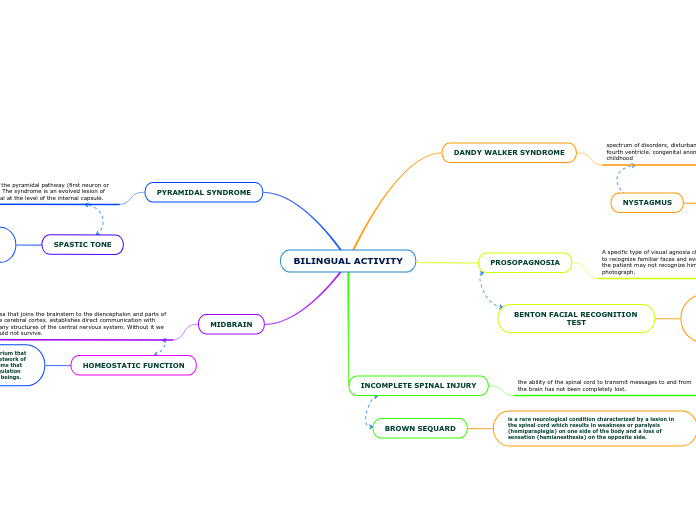BILINGUAL ACTIVITY
DANDY WALKER SYNDROME
spectrum of disorders, disturbance in the development of the fourth ventricle. congenital anomaly, usually appears in childhood
PROSOPAGNOSIA
A specific type of visual agnosia characterized by the inability to recognize familiar faces and even in the most severe cases the patient may not recognize himself in a mirror or in a photograph.
INCOMPLETE SPINAL INJURY
the ability of the spinal cord to transmit messages to and from the brain has not been completely lost.
PYRAMIDAL SYNDROME
Produced by injury to the pyramidal pathway (first neuron or corticospinal neuron). The syndrome is an evolved lesion of the pathway. pyramidal at the level of the internal capsule.
MIDBRAIN
area that joins the brainstem to the diencephalon and parts of the cerebral cortex. establishes direct communication with many structures of the central nervous system. Without it we could not survive.
